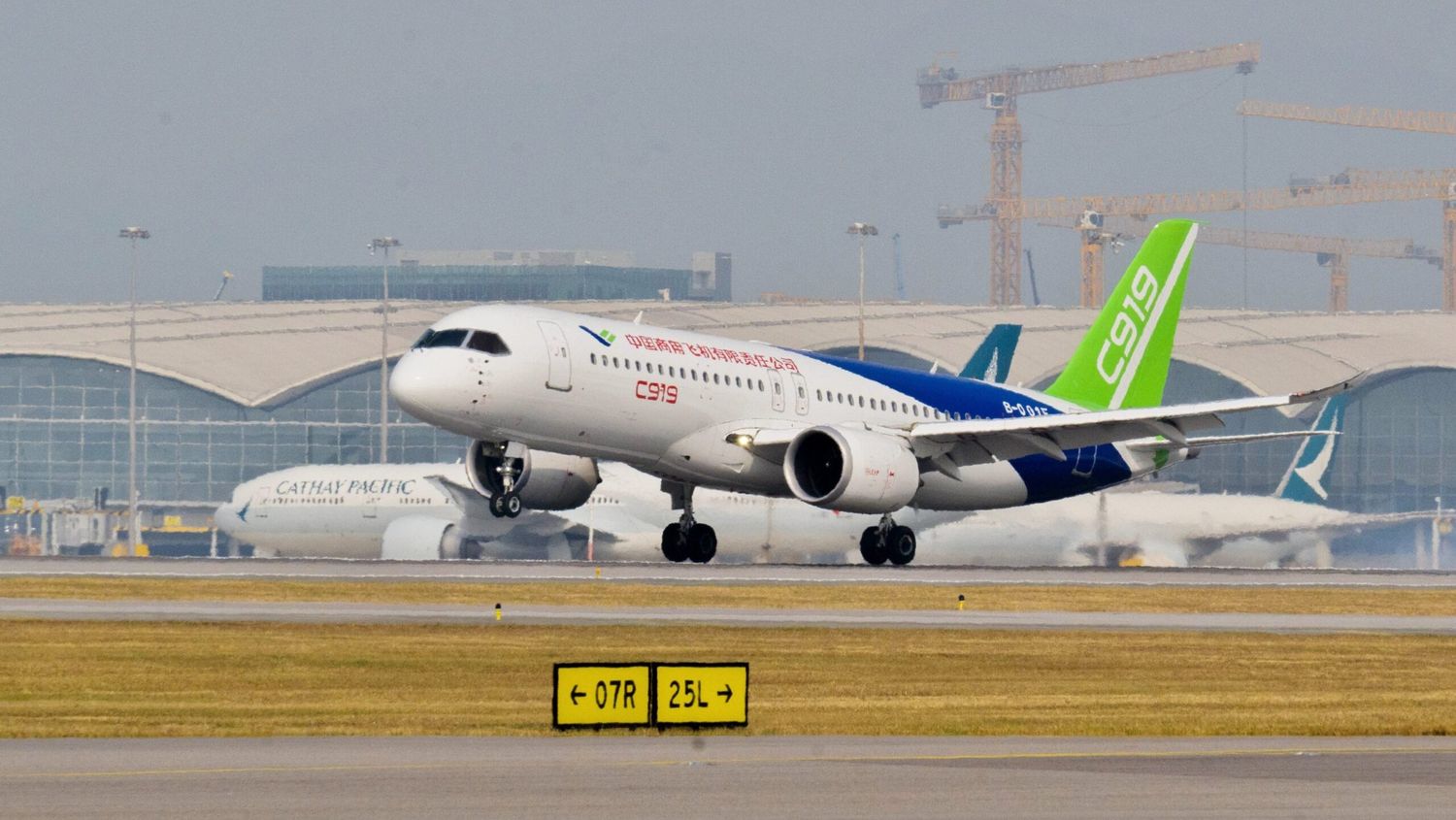Commercial Aircraft Corporation of China (COMAC) signed a strategic cooperation agreement with Tibet Airlines to jointly develop a version of the C919 adapted for high-altitude airports.
Before this collaboration, COMAC had announced plans to create two distinct models derived from the C919 series. The model in question aims to address the unique challenges posed by Hot & High airports, named C919 Plateau.
The project involves reducing the size of the C919, currently with a length of 38.9 meters and a wingspan of 35.8 meters, and improving the engine, currently powered by the CFM International LEAP.
See Also: China develops two variants of the COMAC C919 to compete with Boeing and Airbus
The goal of the C919 Plateau is to rival the A319neo, a model that Airbus promotes as an ideal option for operations in Hot & High airports and those involving complex approaches on short runways.
Under that assumption, the «short» C919 could accommodate between 138 (in two classes) and 153 (in a single high-density class) passengers, while an A319neo can carry between 110 and 160 seats, depending on the configuration chosen by the operator.
So far, COMAC reports a total of 1,081 orders for the C919, including firm orders and options, from more than twenty airlines, mainly with companies based in China. Three aircraft have been delivered to China Eastern Airlines and are currently operational between Shanghai/Hongqiao (SHA) and Chengdu (TFU).
See Also: COMAC arrives with the C919 and the ARJ21 for the first time in Hong Kong

Why Tibet Airlines?
Tibet Airlines, the main airline of the namesake province, operates in high-altitude airports located within the Himalayan mountain ranges. Its main hub is in the capital of Tibet, Lhasa (LXA), situated at an altitude of 3,570 meters above sea level (masl).
The airline also serves six other airports located at altitudes above 2,500 masl, including Qamdo (BPX), the second highest airport in the world, located at 4,311 masl.
At these high-altitude airports, the performance of engine thrust and aircraft lift is significantly affected, requiring longer takeoffs and landings.
To operate on standard-size runways in H&H (Hot & High) environments (or on short sea-level runways), manufacturers have developed performance enhancement packages like Boeing’s SFP (Short Field Performance) for the 737-800 or Airbus’s SHARP (SHort AiRfield Package) for the A320neo.
See Also: Tibet Airlines receives the first Airbus A319neo built in Tianjin, China
As a result, the shortened, modified models of their original counterparts have become the preferred choice. Boeing offers the Boeing 737-700 and the Boeing 737 MAX 7, while Airbus offers the A319ceo and the A319neo, which have proven to be very suitable for high-altitude airports.
In particular, the Airbus A319neo has gained popularity among Chinese airlines: Tibet Airlines operates six and expects the delivery of one. The airline also manages a fleet of 27 Airbus A319ceo aircraft.


Comentarios
Para comentar, debés estar registrado
Por favor, iniciá sesión